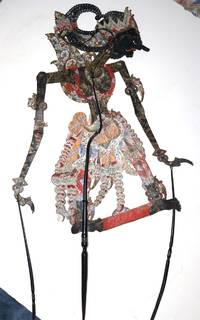Carousel content with 1 slides.
A carousel is a rotating set of images, rotation stops on keyboard focus on carousel tab controls or hovering the mouse pointer over images. Use the tabs or the previous and next buttons to change the displayed slide.
-
 Slide 1:
Slide 1:
-
 Slide 2: no title
Slide 2: no title -
 Slide 3: no title
Slide 3: no title -
 Slide 4: no title
Slide 4: no title -
 Slide 5: no title
Slide 5: no title -
 Slide 6: no title
Slide 6: no title -
 Slide 7: no title
Slide 7: no title -
 Slide 8: no title
Slide 8: no title -
 Slide 9: no title
Slide 9: no title -
 Slide 10: no title
Slide 10: no title -
 Slide 11: no title
Slide 11: no title -
 Slide 12: no title
Slide 12: no title -
 Slide 13: no title
Slide 13: no title -
 Slide 14: no title
Slide 14: no title -
 Slide 15: no title
Slide 15: no title -
 Slide 16: no title
Slide 16: no title -
 Slide 17: no title
Slide 17: no title -
 Slide 18: no title
Slide 18: no title -
 Slide 19: no title
Slide 19: no title -
 Slide 20: no title
Slide 20: no title -
 Slide 21: no title
Slide 21: no title -
 Slide 22: no title
Slide 22: no title -
 Slide 23: no title
Slide 23: no title -
 Slide 24: no title
Slide 24: no title -
 Slide 25: no title
Slide 25: no title -
 Slide 26: no title
Slide 26: no title -
 Slide 27: no title
Slide 27: no title -
 Slide 28: no title
Slide 28: no title -
 Slide 29: no title
Slide 29: no title -
 Slide 30: no title
Slide 30: no title -
 Slide 31: no title
Slide 31: no title -
 Slide 32: no title
Slide 32: no title -
 Slide 33: no title
Slide 33: no title -
 Slide 34: no title
Slide 34: no title -
 Slide 35: no title
Slide 35: no title -
 Slide 36: no title
Slide 36: no title -
 Slide 37: no title
Slide 37: no title
by Hess, Richard (1934-1991)
Near Fine. The portfolio of a highly successful commercial and poster artist and illustrator who did extensive work for magazines such as Time, Sports Illustrated, TV Guide, The New York Times Magazine, designing many covers, as well as many book covers for top publishers, posters for the City Opera, etc. Richard Hess was a giant in his realm, as attested to by the regularity that he was tapped time and again by so many major publishers. It is easy to see why in this portfolio, as he was adept at working in a variety of styles, as can be seen in the images of his work from this portfolio, but had a clear affinity for Surrealism, which informed well over (truncated) half of the examples, with the "American style" of Thomas Hart Benton, and even here and there, the sentimental approach of Norman Rockwell, salient. Surrealism and the quasi-Folk Art-ish school of Benton are not mutually exclusive, and Hess deftly could combine the two. He also had a facility with caricature, which in his hands, could veer towards the Surreal. And while one can certainly find aspects of his artwork imitative of Benton, de Chirico, Magritte and others who preceded him, one can not deny the extraordinary imaginativeness of many of his conceptions. And this applies even to the paintings in which he is explicitly copying an idea of his but coming up with an apt variant. Folio, 43 by 35 cm. Unpaginated, 36 leaves with most often just one item on a page but in one instance, seven items. With 70 pages with mounted specimens. Not counting the mounted "bookplate" or label identifying Hess and giving his address, there are 94 pieces in all, many of them large, nearly full page, and eleven of them, folding, including large posters. Of the 94 pieces, eight were magazine covers for Time, nine, for TV Guide, four, for New York Magazine, three, for the New York Times Magazine. There are ten dust jackets. The City Opera was a regular gig, quite clearly. Here there are ten examples of his posters. Other commissions on display are from HBO, ABC, a few large corporations, There are a good number of specimens with no identifiable sponsor or advertiser, which we assume were of paintings he did for himself or as fine art to sell to collectors. All of these, without exception, are done with some Surrealistic slant, from which we would infer that Surrealism was his favorite, or most comfortable approach, at looking at the world, at least as an artist. All the card leaves are accompanied by tissue guards. There is a single instance in which a mounted piece clearly has disappeared, and another place where it would seem Hess intended to mount something but didn't get around to it. In the back there are unused leaves, but the album is essentially complete, or mostly used up. No serious condition issues. The samples are almost always in fine condition.
(Inventory #: 19848)


